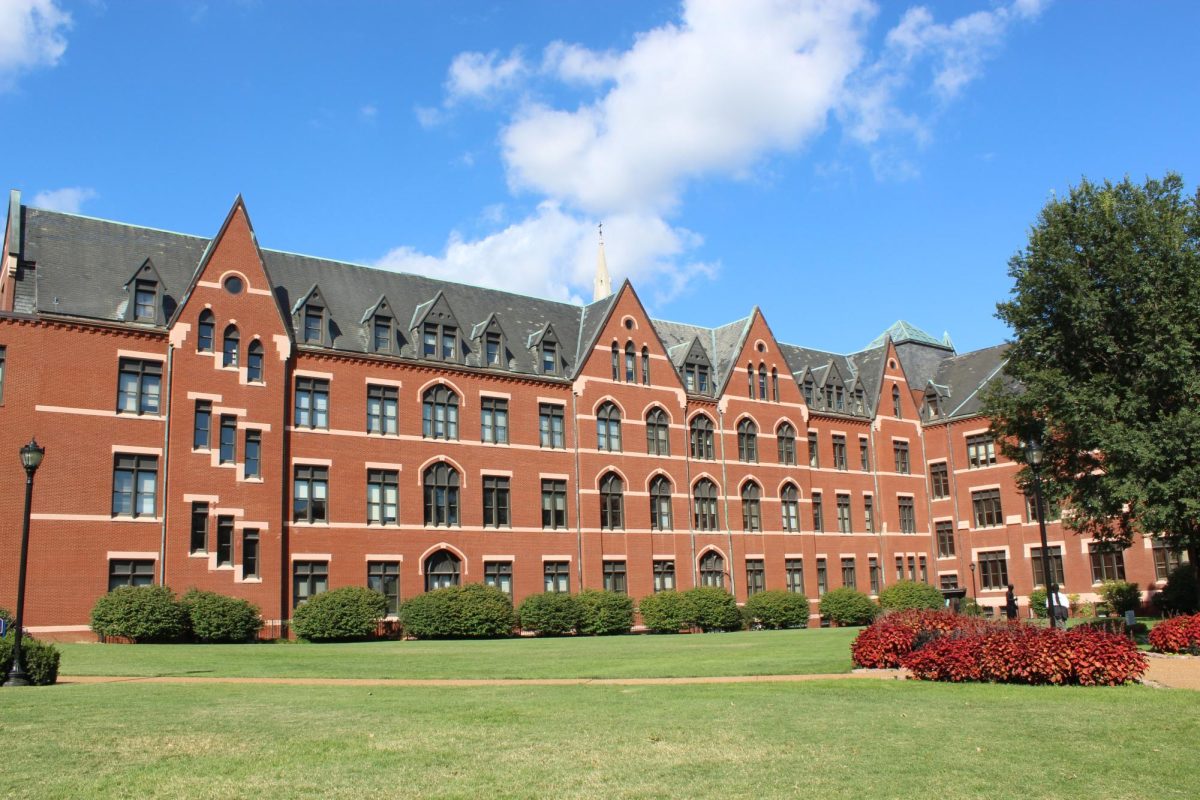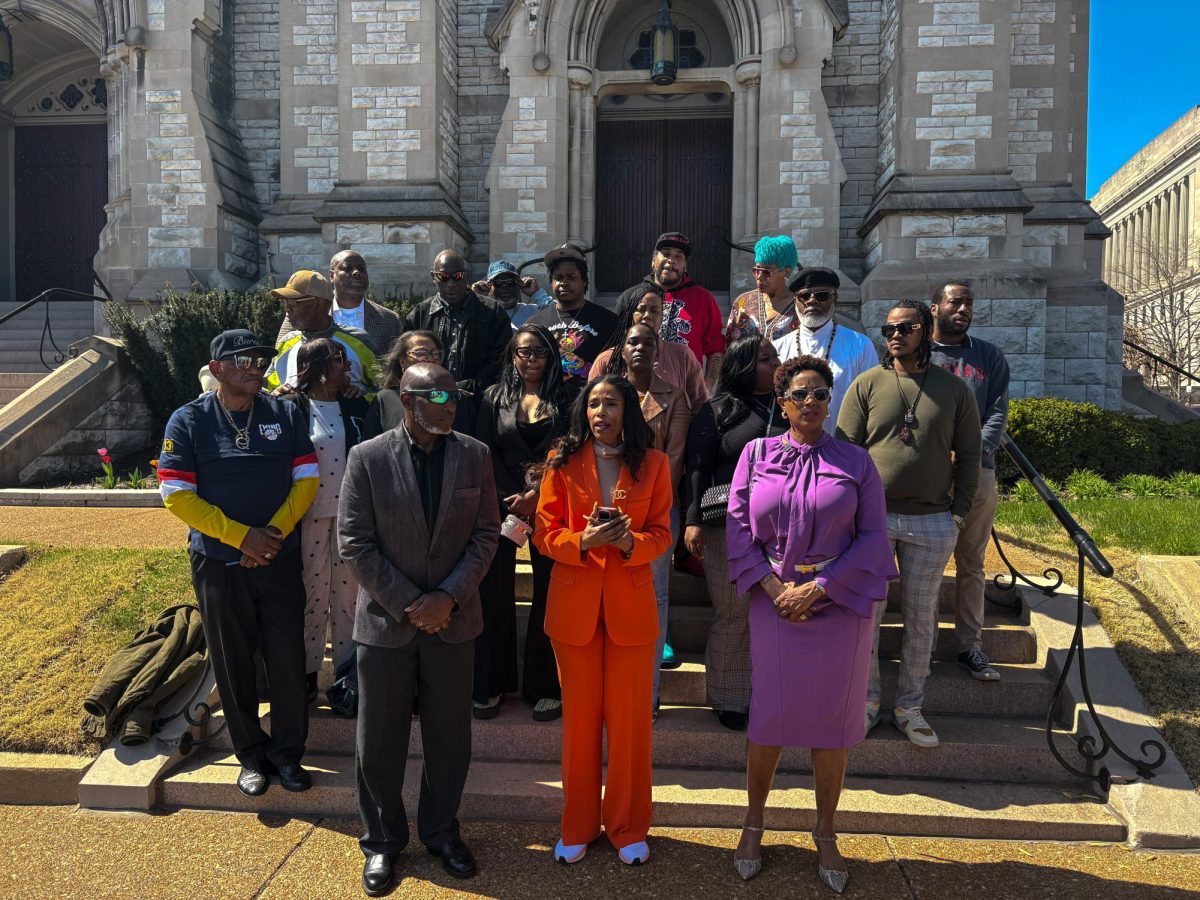A budget deficit will force Saint Louis University (SLU) to cut $20 million in expenses in the 2024-25 fiscal year, a figure confirmed by Provost Mike Lewis in an interview with the University News.
The university is pausing all non-essential hires, delaying a faculty merit raise and working on restructuring academic and administrative departments.
University officials initially announced a 2% reduction in statements to faculty in July and early September, but this figure grew to 4% at the start of the academic year. This increase became known to administrators in the weeks leading up to student arrivals on campus.
“We are truly sharing information as quickly as we learn it and can digest it ourselves,” Lewis said.
The increase in reductions was mainly caused by a significant drop in international student enrollment. SLU’s FY 2024 budget anticipated over 1,300 incoming international students, but only around 300 were enrolled.
Lewis explained why the decrease in international student enrollment was so drastic, saying “it is very much related to visa issuances.”
Visa issuances for international students across the United States fell in 2024, deviating from high figures the previous year. 2023 had the highest number of visas issued to students since 2016, with over 450,000 students invited to study in the U.S. SLU’s international student enrollment follows this trend, peaking at around 1,400 total international enrollments in 2023.
“All-along the way we had numbers indicating we would have a similar outcome to last year, and thought our budgeting projection would be fine, except for the last step (visa issuance), where we have no agency,” Lewis said.
While SLU has accurate measures to track projected international student enrollment, such as deposits and housing contracts, the final step in determining whether a student will be accepted, the actual visa issuance, is solely dictated by the State Department.
In a Sept. 5 statement, university leaders outlined three teams working to find specific solutions to the deficit. The first team is focused on addressing immediate operational efficiencies, the second on increasing revenue opportunities and the third on aligning program offerings with student needs and SLU’s enrollment picture.
Lewis will be leading the third team, collaborating with faculty and department leaders to restructure SLU’s academic offerings to better align with future student needs.
“It’s really just rethinking how we make this work. Higher-ed is going through dramatic changes,” he said. “I think everybody needs to be part of this conversation, including students.”
Lewis also gave some specifics about how the challenge is being divided among his group of department heads, deans and faculty members.
“I’m going to have four subgroups. The first group will consider how we think about faculty workload, the second will look at curricular oversight and project management, the third will focus on policies and procedure and the fourth will look at academic size and scope,” he said.
Faculty senate president Christine Rollins has been working closely with Lewis, focusing on making significant, long-term changes in SLU’s FY 2026 and 2027 budgets. She said faculty members will be represented in the decision making.
“All teams will be heavily populated with faculty,” Rollins said. “Decisions will start at the local level, and include faculty members, department heads and deans.”
President Fred Pestello’s statement in July also included references to the faculty and staff merit raise pool, which increased by 3% in FY 2025. These raises were set to take effect on Oct. 1, but were delayed until January, Rollins said. The raises were dependent on fall 2024 enrollment.
Faculty members have not been notified of this delay and there has been no public communication from administrators about this.
Rollins said staff and student needs are a priority in the face of these challenges, but faculty are concerned with decision making and are feeling the pressure of the deficit.
SLU has made staggering advancements in research since 2016. Research expenditure increased by $37 million from 2016 to 2021. These investments sought to launch SLU to R1 research status, a classification given to doctoral institutions with “very high” research activity. Institutions with this classification typically receive the highest amounts of federal grants and private investment.
While administrators say they remain committed to this progress in the face of enrollment challenges, faculty leaders are in a tough position. They are tasked with both cutting and restructuring their departments, while also increasing their research output.
With raises being delayed until January, the future is uncertain for many faculty members. Several faculty members the University News spoke with declined to publicly comment on the situation.
The University News will continue to report on this story in the following months.











View Story Comments